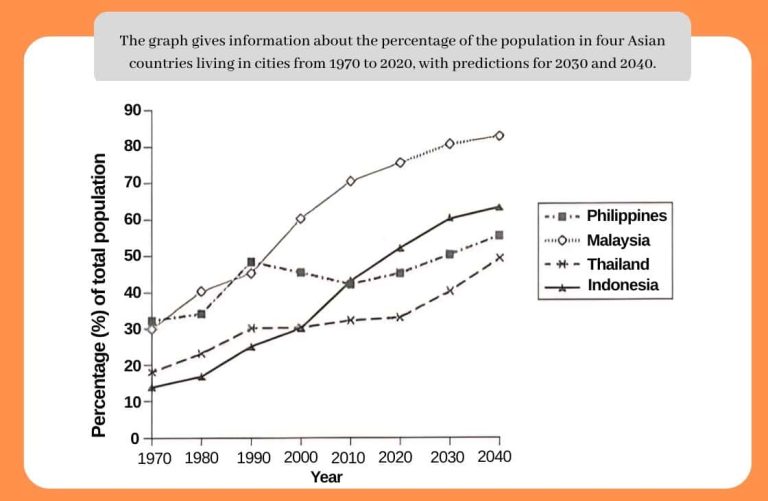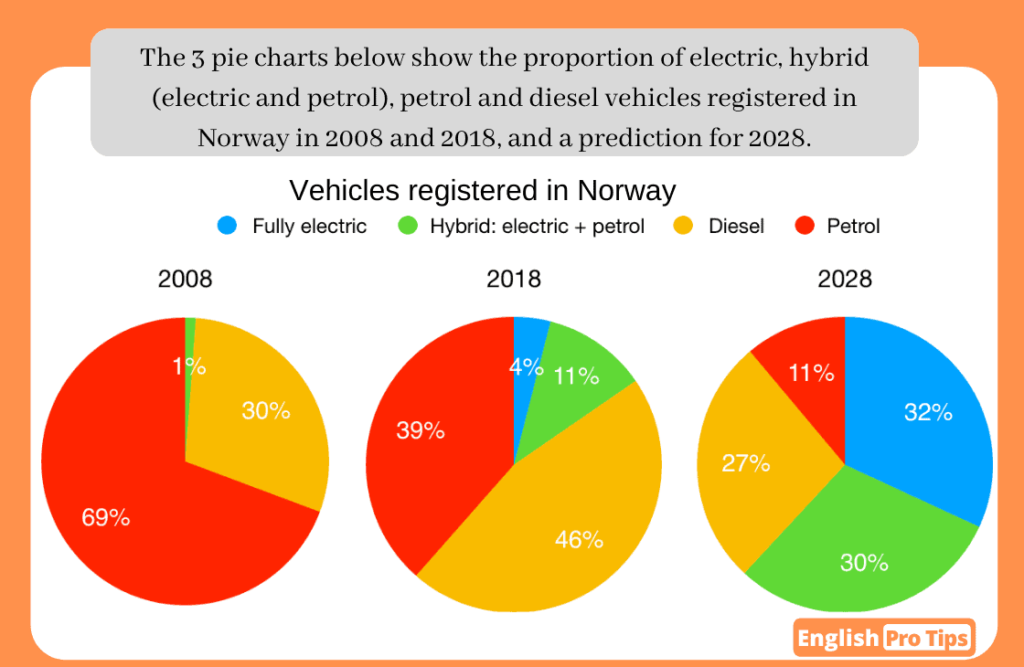Examiner Comments
This report provides a clear and accurate description of changes in urbanisation across the four countries. It identifies the overall upward trend and highlights key comparisons, such as Malaysia overtaking the Philippines and Thailand remaining the least urbanised.
The introduction paraphrases the task effectively.
There is a clear overview which summarises the main features well. Precise figures are included throughout, supporting the analysis without unnecessary detail.
The response is well organised, with a logical progression of ideas. Malaysia and Indonesia are grouped together, followed by the Philippines and Thailand, which creates a balanced structure.
Cohesive devices are used appropriately to guide the reader (“by contrast,” “although,” “similarly”), and there is good use of referencing (“its growth slowed”) which ensures the writing flows naturally.
The vocabulary is varied and well-suited to the task, showing a strong command of academic style.
Words and phrases such as “share of urban dwellers,” “forecast to remain,” “overtaking,” “surging,” “anticipated,” and “marking the slowest growth” demonstrate flexibility.
Repetition is avoided by using a range of terms (city dwellers / residents / growth / increase / expansion).
Word choice is precise, with no spelling or collocation errors.
The report makes effective use of a wide range of both simple and complex structures, with a high level of accuracy. Examples include:
- Complex clauses: “Although Malaysia soon surpassed it, it regained the top position by 1990…”
- Comparatives: “behind both Malaysia and Indonesia”
- Passive forms: “it is anticipated to reach approximately 55%…”
- Adverbial phrases: “by contrast,” “shortly thereafter.”
The grammar is consistently accurate.
Useful Vocabulary
Predictions about what will happen in the future.
The line graph illustrates the proportion of people living in urban areas in the Philippines, Malaysia, Thailand and Indonesia from 1970 to 2020, with projections to 2040.
People who live in cities or towns.
Overall, the share of urban dwellers increased in all four countries and is expected to continue rising.
Predicted or expected for the future.
By 2040, Malaysia and Indonesia will have recorded the most significant growth, with Malaysia forecast to remain by far the most urbanised country.
Going ahead of or moving into a higher position than another.
Malaysia climbed from about 30% urban in 1970, to approximately 45% by 1990, overtaking the Philippines shortly thereafter.
Began to move or increase faster.
Its expansion then accelerated, reaching roughly 75% in 2020, and it is forecast to exceed 80% by 2040.
Rising suddenly and strongly.
Indonesia, by contrast, started with the lowest number of city dwellers in 1970 at around 15%, but rose steadily before surging after 2000.
Average or not very strong.
The Philippines and Thailand also experienced increases, although the rate was more moderate.
Went beyond or became greater than.
Although Malaysia soon surpassed it, it regained the top position by 1990 at just under 50%.
Falling a little bit.
However, its growth slowed, dipping slightly in 2010, and it is anticipated to reach approximately 55% by 2040, behind both Malaysia and Indonesia.
Expected to happen in the future.
However, its growth slowed, dipping slightly in 2010, and it is anticipated to reach approximately 55% by 2040, behind both Malaysia and Indonesia.





